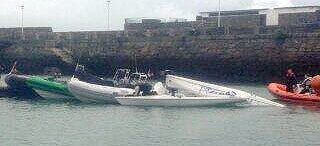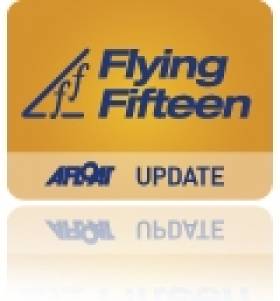Displaying items by tag: Ian Mathews
#flyingfifteen – National Flying fifteen champions Ian Mathews and Keith Poole were dismasted during a breezy start to the Dublin Bay season last weekend. It's a set back in preparations for this weekend's first regional Flying fifteen event at Dundalk Sailing Club on Carlingford Lough which the duo are still expecting to contest.
The National Yacht Club pair, who won the national championships in Dunmore East last season, broke a stay leaving them looking for a replacement spar for the County Louth fixture. Sailing Instructions for the event are downloadable below.
Up to 30 boats are expected on the northern lough on Saturday for a five race event that is forecasted to be a light air event.
Meanwhile, there was an early start to the season for a number of Irish FF sailors who travelled to Palma Vela regatta, held in Mallorca a fortnight ago. The National Yacht Club's Alan Green sailing with Michael Clough was the winner of the Flying Fifteen division. Irish crews Simon Murray, Chris Doorly and Ken Dumpleton were also racing in Spain.
In buoyant times for the class, the Kia sponsored Dun Laoghaire Flying Fifteen fleet continues to expand with a number of new boats to the fleet as well as some crews upgrading their boats. For the first time in a long number of years the fleet has expanded to include boats in the DMYC. More on the FF fleet expansion here

Flying fifteen duo Ian Mathews and Keith Poole secure their boat after a dismasting in DBSC racing last weekend





























































